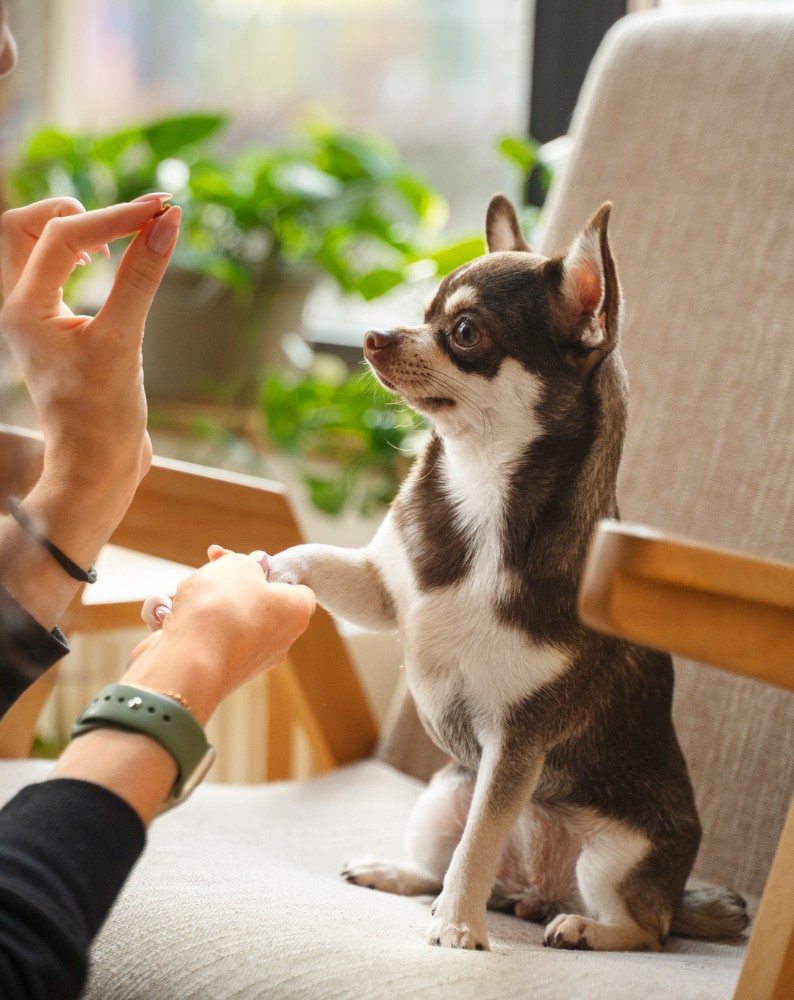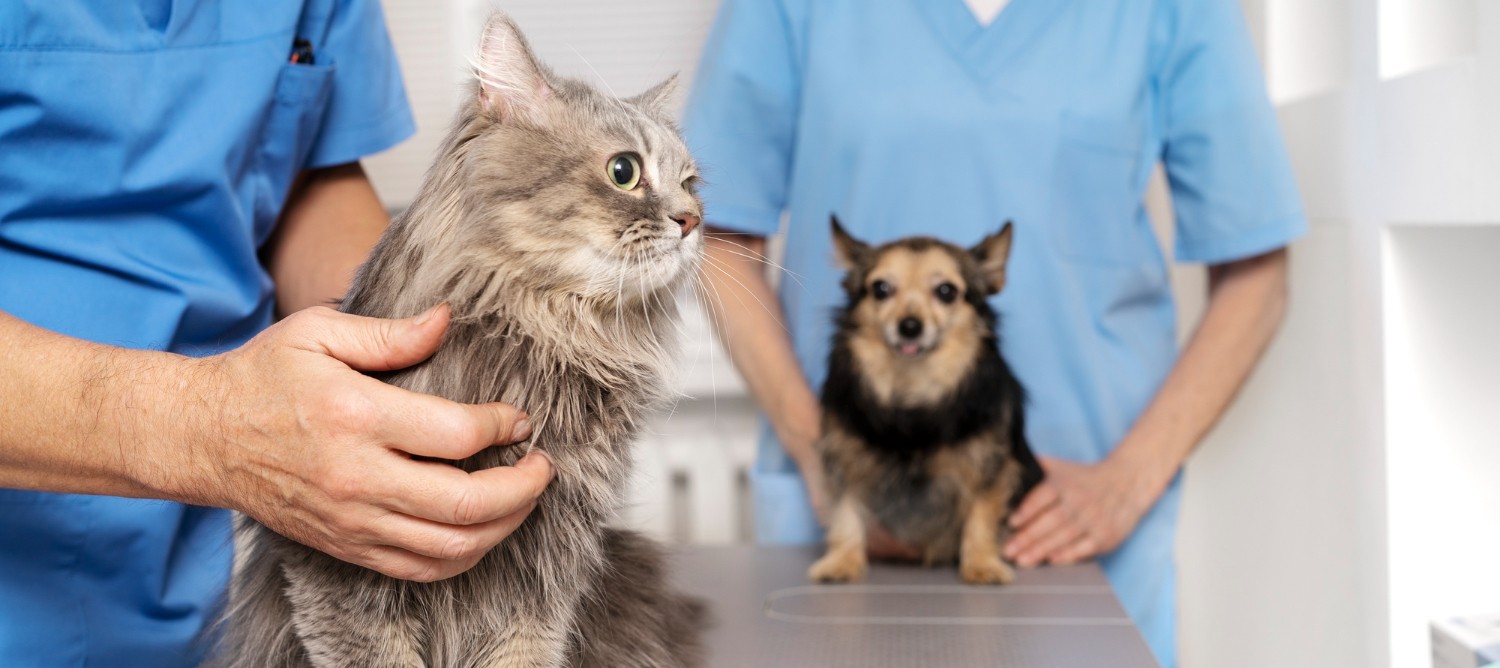An overview of the economics of pet ownership in North America
As pet parents, we go into pet ownership with the understanding that we’re making a financial commitment for the rest of their lifetime. It’s a price we’re willing to pay to keep our furry family members healthy and happy, but the reality is that pet ownership can throw us many financial curveballs.
For example, while we know that our pets aren’t immune from accidents and illnesses, we often underestimate how much unplanned vet treatment can cost. But even for healthy pets, the normal day-to-day cost of pet care is growing far more rapidly than the average American income. For some families, that means debt, hardship, and
sometimes heartbreaking decisions.
At Life Long Paws Foundation, we want to make sure every pet parent is equipped with the knowledge they need to financially prepare for their pet’s care. Read on to learn about the full costs of pet ownership and how you can plan for the unexpected.

A breakdown of pet ownership costs
For both dogs and cats, we’ve used information from pet website Rover.com. We’ve selected this source because, in addition to providing the most recent data, they are also the most thorough in terms of covering all of the different expenses. The sample is on the smaller side at 1,000 pet parents, but we believe the results to be fairly representative based on other sources we’ve looked at.
Before we dive in, we must point out that pet ownership costs can vary wildly depending on pet breed, location, age, health, and more. What we aim to do here primarily is give you a realistic idea of every expense, highlighting hidden costs and helping you to better prepare. We have used the median (middle) of Rover.com’s range to give you a average cost for these expenses, but we encourage you to do further research to get more precise figures for your pet’s circumstances.
The initial cost of getting a pet
When you welcome a new pet into the family, you’ll need to pay the following one-off costs to get them settled in.
| - | Cats | Dogs |
|---|---|---|
| Adoption fees | $93 | $300 |
| Spaying or neutering | $208 | $388 |
| Microchip and ID tags | $58 | $58 |
| Initial vet exam and vaccinations | $295 | $340 |
| Pet license | $55 | $73 |
| Collar | $18 | $33 |
| Bed | $133 | $240 |
| Food and water bowls | $48 | $43 |
| Toys and chews | $40 | $113 |
| Grooming items | $50 | $70 |
| Harness | n/a | $43 |
| Leash | n/a | $43 |
| Crate | n/a | $250 |
| Potty pads and cleaning supplies | n/a | $68 |
| Litter box | $280 | n/a |
| Carrier | $90 | n/a |
| Scratching post | $160 | n/a |
That brings the initial cost to an average of $1,528 for a new cat and $2,062 for a new dog. Things that might affect this cost include:
Adopting your pet
Shelters will often include initial microchipping and vaccinations in the adoption fee, lowering your overall cost.
Getting your dog from a breeder
This costs significantly more, with some sources estimating $1,500 for a labrador and $2,500 for an English bulldog.
Choice of supplies
The figures above are middle-ground estimates, but most pet supplies can be bought for much cheaper. For example, the average dog bed on Rover’s list costs $240, but you can get your pup a perfectly cozy bed for way less! And pricey self-cleaning litter boxes will skew the average cost higher for cats, but you can easily get a litter tray for under $30.
Recurring costs of pet ownership
Once you’ve taken your new furry family member home, you’ll need to budget for the following annual care costs.
| Cats | Dogs | |
|---|---|---|
| Food | $1155 | $2338 |
| Litter | $435 | n/a |
| Toys | $80 | $80 |
| Annual vet check-up | $118 | $118 |
| Pet insurance | $660 | $660 |
| Flea and tick preventatives | $245 | $245 |
| Treats | $200 | $200 |
This brings the recurring annual cost of pet ownership to $2,893 for a cat and $3,641 for a dog. Things that can affect this cost include:
Choice of food
This median cost will also include pet owners who buy premium food or special therapeutic foods for pets with health conditions, but you can feed your pet for significantly cheaper.
Pet insurance
Note that while these figures reflect the wide variety in policies held by the cat owners surveyed, the North American Pet Health Insurance Association (NAPHIA) estimates the average accident and illness policy to be much cheaper at $387.01 a year.
Other costs of pet ownership
In addition to standard pet care costs, there are occasional expenses you may incur. We can’t give an estimate for the cost of these expenses as they will depend heavily on if and when you need them and where you live, but it’s good to be aware of them so you can research your options:
- Incidentals (e.g. poop bags, cleaning supplies)
- Replacement supplies (e.g. bowls)
- Grooming
- Boarding
- Pet sitters
- Dog walking
- Doggy daycare
- Training
- Behavioral therapy
- Supplemental pet charges or deposits for travel, rented accommodation, etc.
- Annual wellness costs (e.g. dental cleanings)
- Emergency vet care (more on that later!)

Pet affordability for the average American
As you can see, there is more than meets the eye when it comes to pet ownership. With so much conflicting or incomplete information, it’s easy to see why many pet parents find it hard to judge the true cost. In a survey by financial services company Synchrony, nearly half of pet owners admitted to underestimating the lifetime cost of caring for their pets.
That cost is unfortunately getting higher for 84% of pet parents, and some are finding it hard to keep up. The recent economic crisis affected the price of most goods and services, pet care included. Inflation and wage growth have recovered to 2.5% and 4.6% respectively, but they’re still being far outpaced by the rise in pet care costs.
Between July 2022 and July 2023, the cost of veterinary care rose by 11% according to the Bureau of Labor Statistics’ Consumer Price Index. This has been fueled by various factors, like increased demand after the pandemic pet adoption boom, increased cost of veterinary supplies, and a shortage of veterinary students and grads.
These rising costs can be especially painful when it comes to illness and emergency care. An emergency visit already costs anywhere from $200 to $10,000, with an average trip ringing up at $1,500. We tend to think it won’t happen to us, but Pawlicy Advisor claims that one in three pets require emergency care every year.
Then there’s illness. The cost of treatment varies widely depending on the condition, but the below claim data from Healthy Paws gives an idea of how much it can cost to treat the most common ailments.
| Condition (Cats) | Average Cost | Condition (Dogs) | Average Cost |
|---|---|---|---|
| Skin conditions | $200–$2,500 | Gastritis | $1,500–$1,800 |
| Gastritis | $1,600–$5,000 | Urinary tract infections | $1,050 |
| Ear infections | $850 | Skin conditions | $200–$2,500 |
| Eye conditions | $1,500 | Infections | $300–$2,000 |
| Heart conditions | $1,500–$2,500 | Heart conditions | $1,500 |
When you consider that 37% of Americans report having less than $400 in emergency savings, a heartbreaking picture starts to emerge. The Canine Journal reports that 41% of people surveyed have gone into debt to pay for their dog’s emergency or illness vet care. 48% said they would have to consider euthanizing their pet if they were faced with unaffordable care costs, and sadly 18% had already done so.
Pet insurance can offer an invaluable lifeline to pet parents in such situations, but NAPHIA reports that only 1.7% of American pets are insured. In 2022, they reported that the average monthly accident and illness premium was $32.25 for cats and $53.34 for dogs, but premiums at major insurers like MetLife can start from as little as $9 for cats and $15 for dogs. Although we know this is still a stretch for many right now, it pales in comparison to the bills we can be faced with if the unexpected happens to our pets.
Affordable pet care without surprises
Many costs are outside of our control, but they don’t have to take us by surprise! Familiarizing yourself with the true cost of pet ownership means that you can plan effectively for your pet’s future health and well-being, and one of the best ways to do this is to make sure your pets are insured. To learn more about how to make sure your beloved pet is properly covered and how to avoid common insurance pitfalls, check out these articles now:
Challenges and Opportunities in Pet Insurance
Pet Insurance: Are There Any Good Options?


